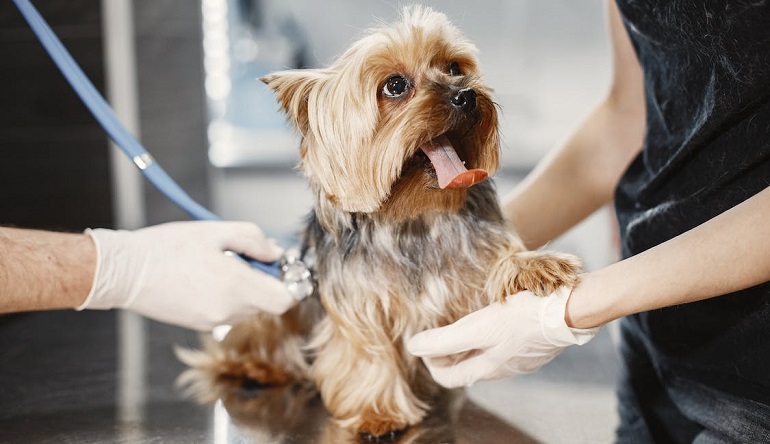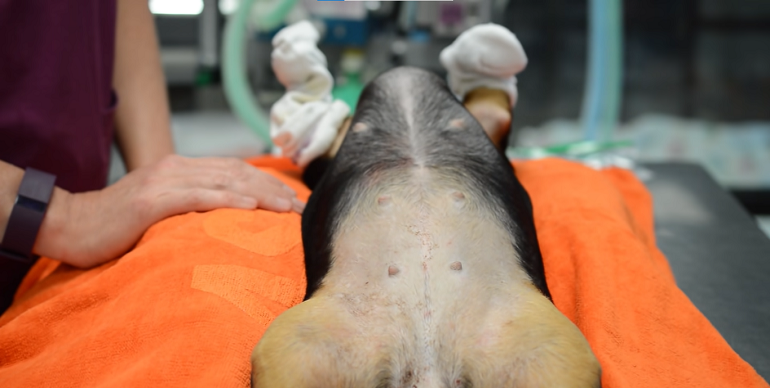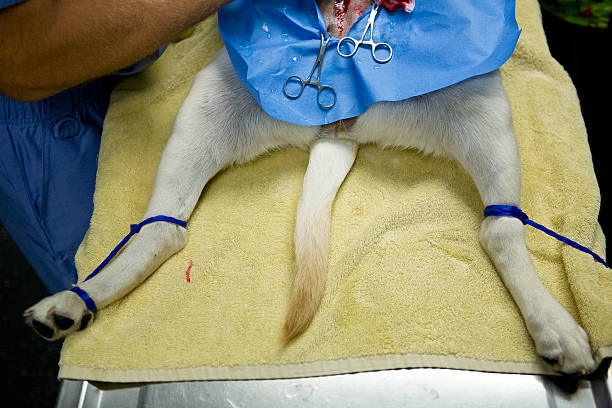Every day, more than 70 000 puppies and kittens are born in the US alone. Yet, sadly, more than 6.3 million animals are surrendered to shelters nationwide annually by pet owners, of which 3.1 million are dogs.
These statistics point to a pet overpopulation that is out of control, with many of these animals ending up euthanized as shelters struggle to cope with the influx of animals.
Opting to have your pet undergo this procedure doesn’t just prevent unwanted litters; it also has behavioral and health benefits. But how old to neuter a dog and when is the best age to spay or neuter, and what recovery time is involved?
In this article, we provide all the answers and look at current research on the procedure to help you make an informed decision as a responsible pet parent.
What Are the Benefits of Spaying or Neutering?
Spaying or neutering your pet doesn’t just prevent unwanted litters. It also has behavioral and health benefits for dogs. In fact, studies have shown that dogs that have been altered, on average live longer.

Decreases Aggressive Behavior
Hormones contribute to a dog’s natural instincts, like dominance, territory marking, and aggression toward other dogs. Opting to spay or neuter your dog can help reduce these behaviors.
Lowers the Chances of Reproductive Health Issues in Different Breeds
In females, spaying eliminates the risk of ovarian and uterine cancer and other diseases such as pyometra, a life-threatening uterus infection. In addition, it also reduces the risk of mammary cancer. While a neutered male dog has less risk of testicular cancer and a lower risk of prostate problems.
When to Neuter Your Pet? What Is the Best Age?

On average, the best age to have your female spayed or male dog neutered is between six to nine months of age if they are small toy breeds. However, it is recommended that for larger breeds or giant breeds, the appropriate age is when they are near or over 12 to 18 months of age.
This is because some veterinarians feel that spaying or neutering your dog too early will deprive it of the sex hormones necessary for skeletal growth and development.
Additionally, you do not have to let your female dog go through its first heat cycle before spaying. In fact, studies have shown that urinary incontinence and mammary cancer risks are higher if you wait to spay your dog.
Caring for Your Pet after the Neuter Procedure
Like humans, most animals will take some time to recover and feel some discomfort from being spayed or neutered. This recovery can be anything between 10 to 14 days on average, with most dogs starting to feel better in 24 to 48 hours after their surgeries.
Although spaying and neutering are common surgical procedures, you, as a pet owner, need to ensure your dog makes a comfortable recovery by:

- Limiting activity. Strenuous activities such as jumping, running, and going for long walks could disrupt recovery.
- Keeping your dog calm. Confine your dog to its crate or an enclosed area, if necessary, in a quiet place where it will be comfortable when you are not around to supervise it.
- Regularly checking the incision. Prevent your pet from licking the affected site, which may cause an infection. Keep the incision dry and check it twice daily for any swelling or infection.
- Keeping your dog on a regular diet. After surgery, your dog’s appetite should return gradually within 24 hours. The best advice is not to change their food at this time and monitor their eating habits to prevent obesity.
- Keeping your dog confined. Although a female dog can no longer reproduce. If it was in heat when it underwent surgery, it will retain the odor that attracts a male dog. At the same time, a male dog can still reproduce after castration and can remain fertile for up to six weeks post-surgery.
- Looking out for complications. The minimal redness and swelling of the surgery site should resolve within a couple of days, and there should be no drainage, discharge, or odor in females.
What Does Research Show about Spaying and Neutering Pets?
While neutering and spaying is the most cost-effective procedure for preventing unwanted pregnancies in animals, current research has produced surprising results that contradict some of the benefits of altering your dog.
One study found that Hemangiosarcoma, one of the most aggressive cancers seen in dogs and cats, was particularly prevalent in dog breeds, such as Golden Retrievers who had been neutered after one year of age.
Researchers also found that neutered and spayed dogs were more likely to develop mast cell tumors and osteosarcomathan their intact counterparts.
Another study by the University of California Davis revealed that older dogs, such as large breed dogs and giant breed dogs, are at higher risk for one or more joint disorders, such as hip dysplasia if neutered before one year of age.

Yet current links between neutering and undesirable behavior, such as separation anxiety, are conflicting. Studies to date have failed to produce a convincing argument for spaying or neutering as a form of behavior modification for dogs suffering from anxiety.
In fact, The American Veterinary Medical Association advises pet owners that a veterinarian should undertake an informed case-by-case assessment of each patient. And should take into consideration the dog’s age, breed, and underlying health conditions before electing to spay or neuter them.
In Conclusion
While the decision to have your male dog neutered or your female spayed remains with you as the pet owner, the debate rages on as to what the effects are on an animal. But the fact remains that thousands of unwanted puppies are being born every day with a very bleak future ahead of them.
If you are unsure, ask your vet for their advice. But whatever choice you make, don’t let your dog breed indiscriminately add to the burden of animal shelters.












